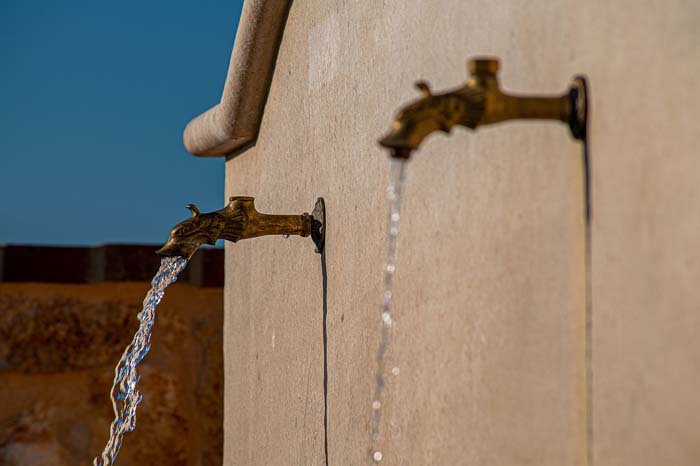
Backwash filter systems can self-clean to eliminate pollutants caught by inverting the water flow within the filter, a process known as backwashing. You can set an electronic control valve to backwash on specific days in response to variations in pressure or based on the amount of water that has gone through the system. It also controls the flow of water. Depending on the medium, they can also use an upward flow or downhill flow setup.
The filter tank often contains granular filter media, which can be carbon, anthracite, sand, or other minerals. Traditional bag and cartridge filters necessitate human intervention for replacement or cleaning. This is a major drawback of backwashing filters. When the weather is terrible, or the temperature drops, cleaning by hand can be a real pain. Over many years, a backwashing filter needs almost no maintenance. This makes it a more hands-off approach.
To further decrease the number of particles downstream of the filter assembly and the number of leachables from the filter, it is best to flush the filters before each use. All of these aspects of filtration may be handled with a well-planned flushing schedule.
How do you backwash filters?
Backwash water filters typically have two distinct phases of operation. A service water filter, often a forward filter, is the first. Backflush, often known as waste removal, is the second stage. The following procedures play an important role in the general operation of backwashing filters.
Forward Water Filtration
- The water from the source flows into the back port of an electronic valve during the forward filtration process. You may find this valve at the very top of the vertical filter tank. The filtration media encircles a riser tube, which the water runs through.
- Particles of pollutants are either suspended in or attached to the filter media. This happens as they go through the water and eventually settle at the tank bottom.
- Other filtration procedures are similar to this one. Nevertheless, combining multiple filter media to filter out diverse contaminants using a single system is possible.
Backflush
- The backwash cycle is the initial one out of three. As said before, the water flow is the inverse of that. The source port remains the same as when the water was flowing into the valve. But the water from the source goes down the riser to the tank bottom. Then, it rises through the media, raising the media and releasing the trapped pollutants. On top of the electronic valve is a third port that allows the rinse water and pollutants to flow out.
- The second cycle follows the same path as the forward water filtration stated earlier and is a quick rinse that resets the media bed. On the other hand, instead of going out of the treated port, the water goes out of the waste port.
- For the last cycle, you’ll want to use a low-flow rinse for about two minutes to let everything settle. Although the filter media has been cleaned and all pollutants have been removed, the valve is still not ready for service.
Note: On average, every 12–20 minutes, the backwash or flush cycle is activated. Depending on the filter medium and contaminants you want to eliminate, many valves offer additional cycles, such as a chemical draw or a second backwash cycle.
Flushing the system helps remove debris and other contaminants from the water before it passes through the filter, making it safe to drink. Let’s highlight three key points:
- Air removal:
Flushing also aids in releasing trapped air from the water lines and filter. This ensures a constant water flow and keeps the filter in good working order by removing air pockets.
- Sediment removal:
If the filter has collected debris or sediment during production, packaging, or shipping, flushing it will eliminate it.
- Carbon fines:
When first turned on, carbon filters—a typical component of water filtration systems—may leak minute carbon particles into the water supply.
What is the significance of a backwash?
The filtration bed is susceptible to impurities and dirt buildup after a certain volume of treated water. As tiny pollutants make their way through the bed. Bleed through, or pressure drops could occur as a result of this. When pollutants build up in the filter, they can eventually bypass the filter bed and wind up in the clean water supply. It is essential to use an automated POE backwashing filter to prevent these kinds of situations. Some of the reasons why backwashing is essential for self-cleaning cycles are as follows:
- Two of its key benefits are keeping the filtered water flow steady and minimizing pressure variations.
- It aids in reactivating the filtration media by aerating and releasing the filtration area in the filter bed. After repeated use, this aids in improving filtration effectiveness.
- When it comes to ultrafilters, they clean the membranes of any infectious pollutants. As a result, the treated water utility sources are less likely to harbor infections.
- Filter renewal is achieved through backwashing. It cleans the media surface and aids in eliminating trapped contaminants. This helps to restore the filter’s original efficiency.
Conclusion
Flushing a freshwater filter is important for optimal water quality and filtration. By filtering out dirt and other contaminants, including bacteria, it guarantees that the water is pure and tastes good. A filter is an economical option for long-term use. This is because regular flushing increases its effectiveness and durability. Your water filter will be reliable and clean by following the proper procedures and ensuring no leftover debris or particles. This allows you and your family to enjoy safe, filtered water.
